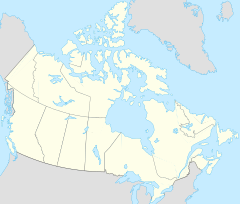Dewey Soper Migratory Bird Sanctuary facts for kids
Quick facts for kids Dewey Soper Migratory Bird Sanctuary |
|
|---|---|
|
IUCN Category Ib (Wilderness Area)
|
|

Dewey Soper Migratory Bird Sanctuary from space
|
|
| Area | 8,159 km2 (3,150 sq mi) |
| Designated: | 24 May 1982 |
| Reference #: | 249 |
The Dewey Soper Migratory Bird Sanctuary, often called Dewey Soper, is a special place for birds in Nunavut, Canada. It is located on the western side of Baffin Island, stretching from Bowman Bay to the Koukdjuak River. This sanctuary is named after J. Dewey Soper, a famous zoologist who studied animals.
This huge area covers about 8,159 square kilometers (which is about 3,150 square miles). It was recognized as a very important wetland on May 24, 1982. This recognition came from an international agreement called the Ramsar Convention, which helps protect wetlands around the world.
Contents
What is the Dewey Soper Sanctuary?
A migratory bird sanctuary is a safe place where birds can rest, feed, and raise their young. Many birds travel long distances, or migrate, between their summer and winter homes. Sanctuaries like Dewey Soper give them a protected stop along their journey.
A Home for Birds and Caribou
The Dewey Soper Sanctuary is incredibly important for birds. It supports almost 30% of all the geese that breed in Canada! This makes it the largest goose colony anywhere in the world. Imagine how many geese that is!
Up to two million birds of different kinds use this area for nesting in the summer. It's not just birds, though. The sanctuary is also a home for one of Canada's main herds of barren-ground caribou. These caribou are a type of deer that live in the Arctic.
Special Features of the Land
The land in Dewey Soper is very unique. It is an intertidal zone, which means it's an area along the coast that is covered by water at high tide and exposed at low tide. It's a wide, flat coastal plain with gently sloping beaches that were once underwater but are now raised.
You can also find many round, shallow lakes scattered across the landscape. There are also large marshy areas. This mix of water and land makes it a perfect habitat for many different animals, especially birds.
Protecting the Sanctuary
The Dewey Soper Migratory Bird Sanctuary was created in 1957. It is protected by special rules and agreements. One important agreement is the Nunavut Land Claims Agreement. This agreement helps decide who owns the land, how it can be used, and who has the right to hunt in the area. These rules help make sure the sanctuary stays safe for all the wildlife that depend on it.



